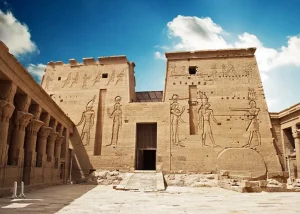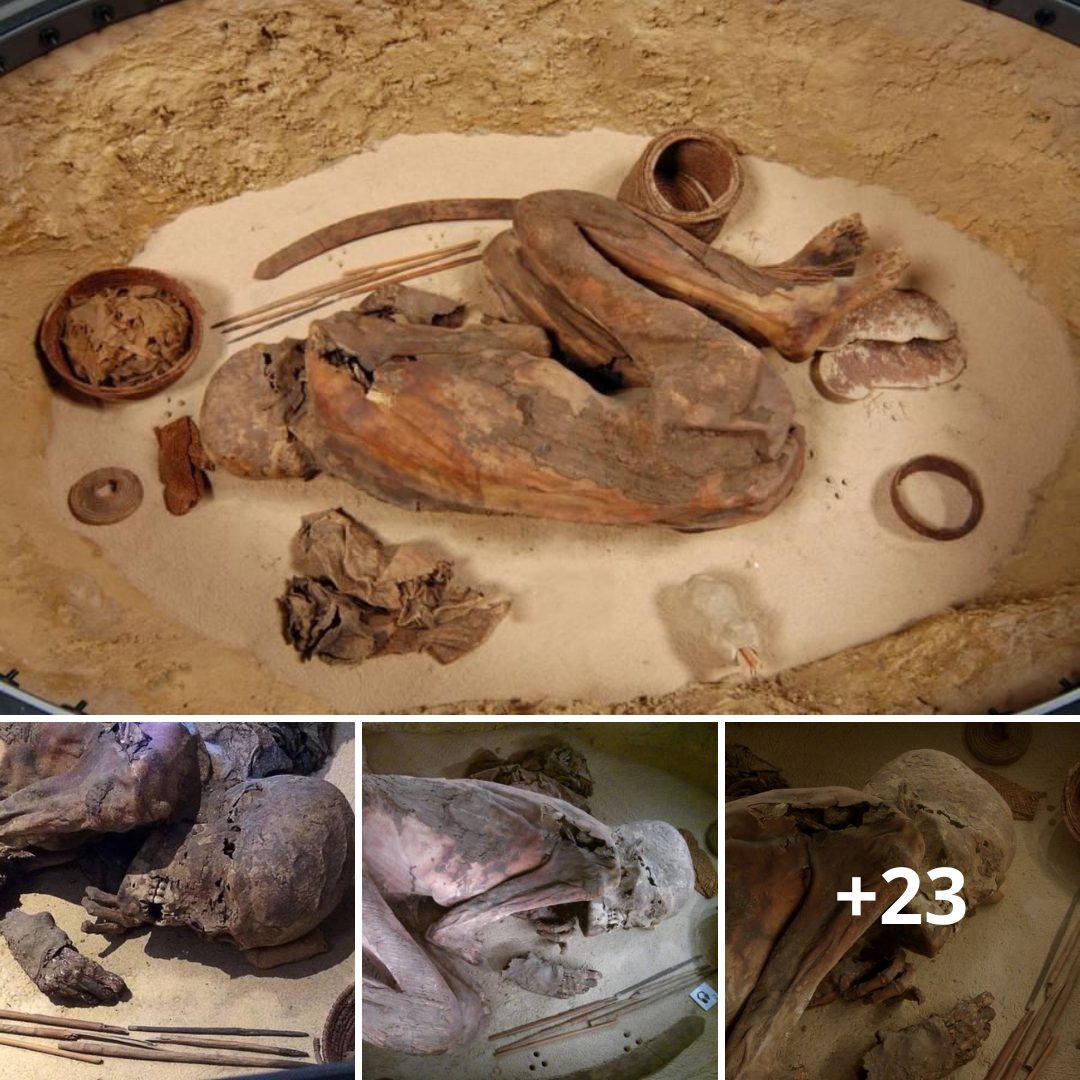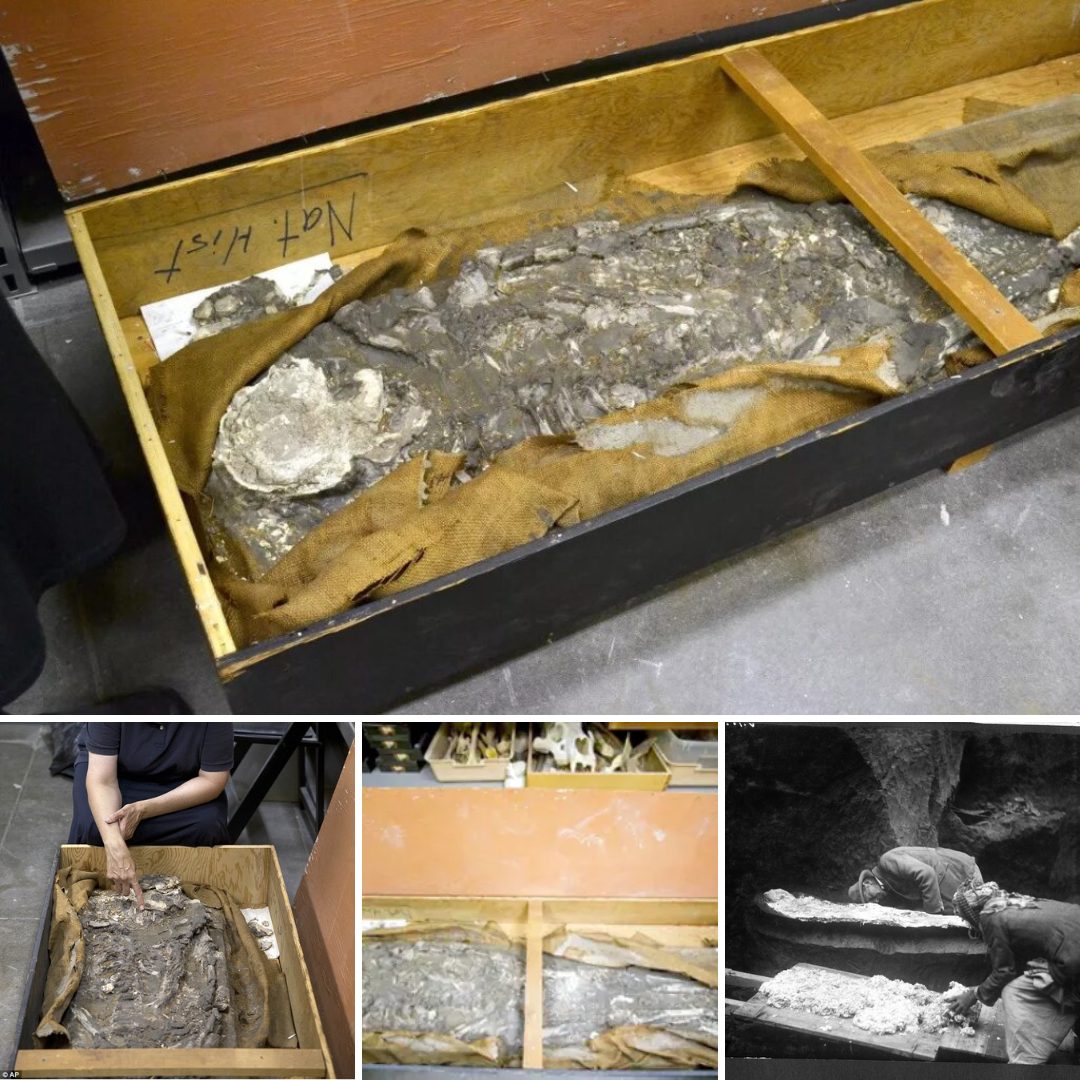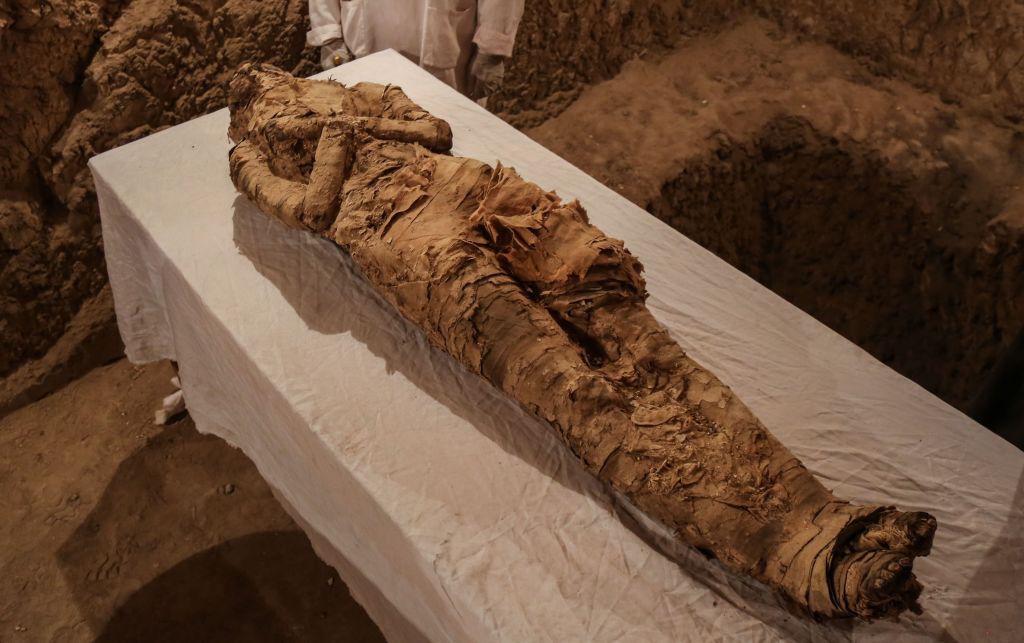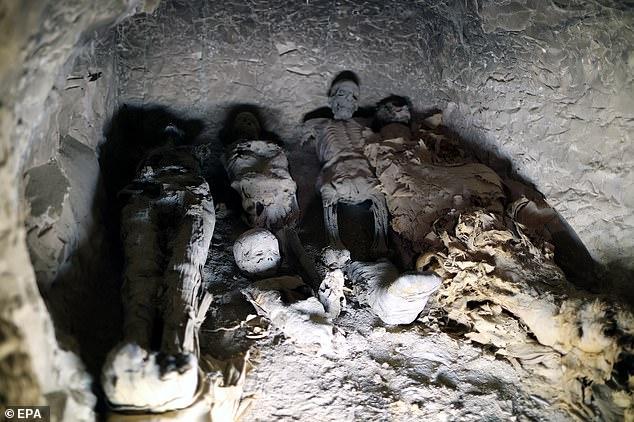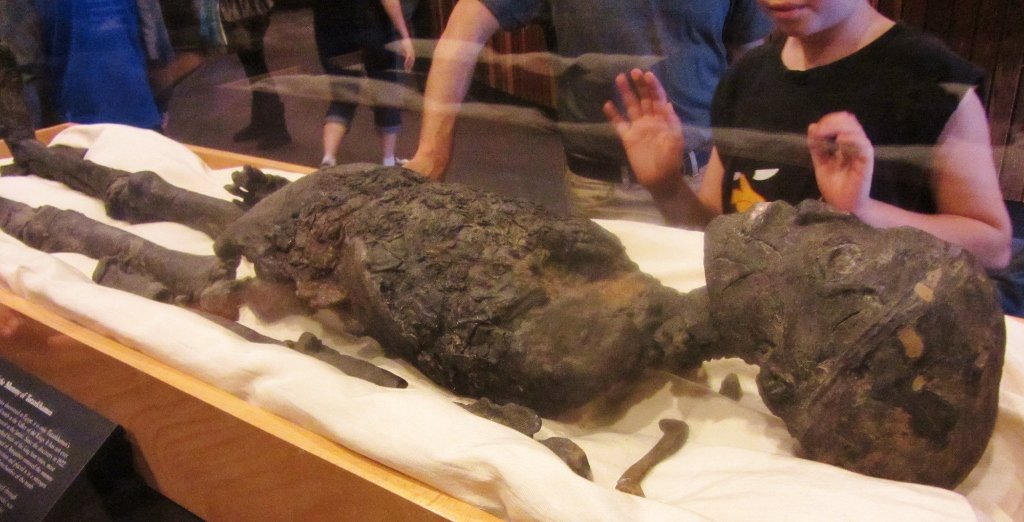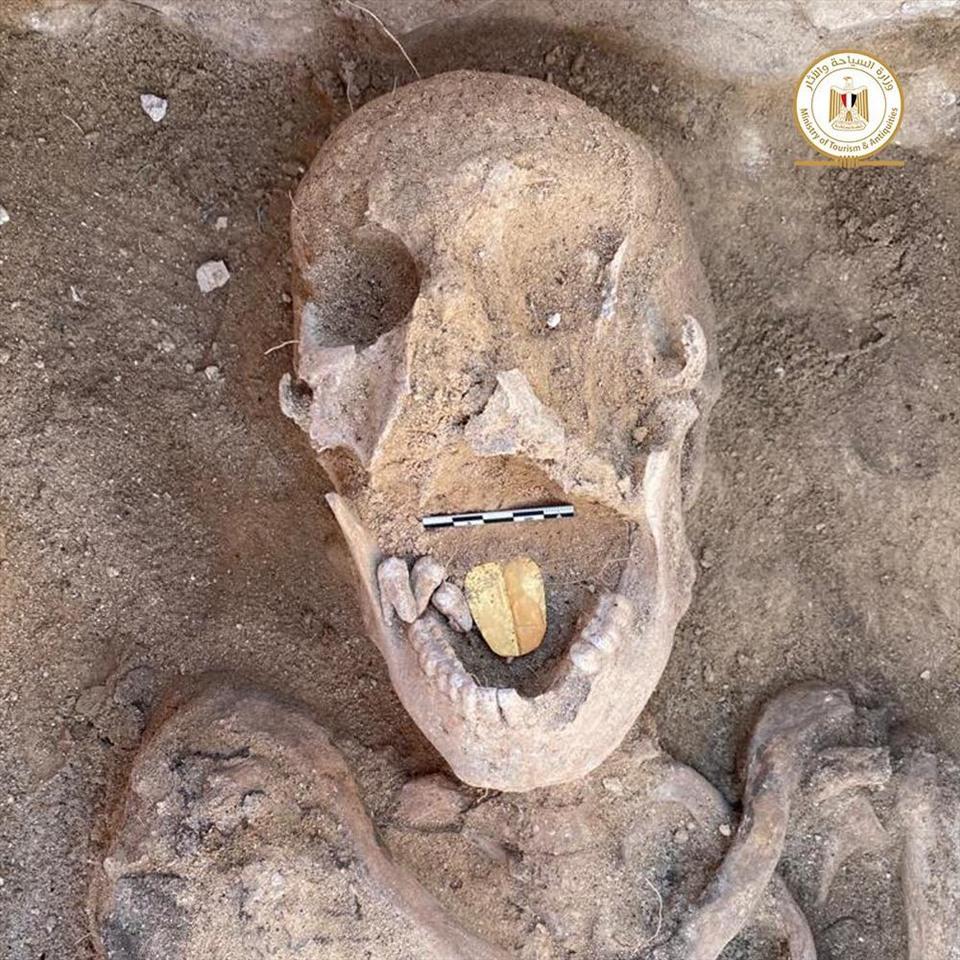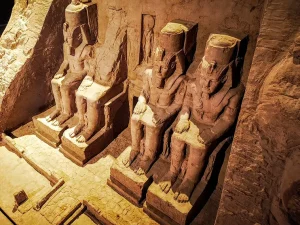
Abu Simbel temples in Egypt
These two immense carved rock temples at Abu Simbel, a village in the ancient Upper Egyptian region of Nubia, are dedicated to 13th-century Pharaoh Ramesses II and his first wife Nefertari.
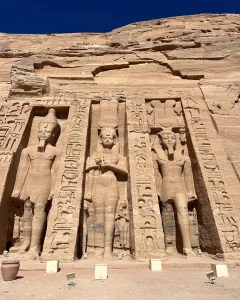
The relocation of a Abu Simbel temples in Nubia, Egypt, between 1964 and 1968
When the Aswab dam was built, the world-famous temples of Abu Simbel were threatened and an entire cultural landscape was flooded. The complex was relocated in its entirety in 1968 on an artificial hill made from a domed structure, the entire site was carefully cut into large blocks (up to 30 tons, averaging 20 tons), dismantled, lifted, and reassembled in a new location 65 meters higher and 200 meters back from the river, in one of the greatest challenges of archaeological engineering in history.
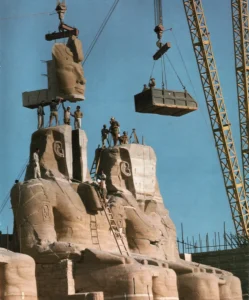
Luxor Temple
These two immense carved rock temples at Abu Simbel, a village in the ancient Upper Egyptian region Built around 1400 BCE from Nubian sandstone, the Southern Sanctuary is a graceful temple complex located at Luxor, on the east bank of the Nile.
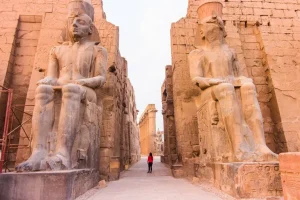
Karnak Temple
The Karnak temple complex at Luxor developed over more than 1,000 years, principally between the Twelfth and Twentieth Dynasties. It was, at its peak, the largest and most important religious complex in ancient Egypt. Karnak temple consists of 134 gigantic stone columns, the largest 12 columns are 24m in height and 3.5m in diameter!
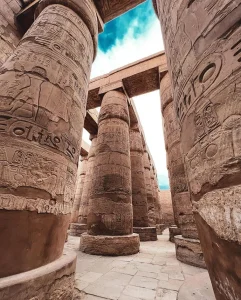
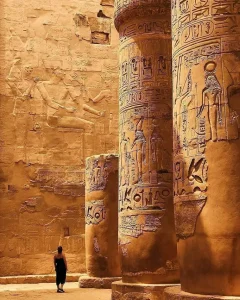
Temple of Kom Ombo
One of the most unusual temples of Ancient Egypt, Kom Ombo was mainly built during the Ptolemaic Dynasty from 180 – 47 BCE, although there is evidence that it stood upon an earlier temple.
The building is unique because its ‘double’ design meant that there were courts, halls, sanctuaries, and rooms duplicated for two sets of gods. The southern half of the temple was dedicated to the crocodile god Sobek, god of fertility and creator of the world with Hathor and Khonsu. Meanwhile, the northern part of the temple was dedicated to the falcon god Haroeris (“Horus the Elder”), along “with Tasenetnofret (the Good Sister, a special form of Hathor or Tefnet/Tefnut) and Panebtawy (Lord of the Two Lands).” The temple is atypical because everything is perfectly symmetrical along the main axis.
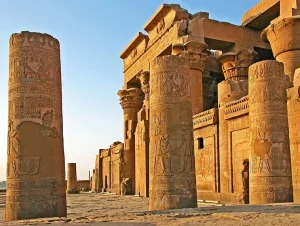
Dennis Jarvis
Temple of Hatshepsut
Also known as the Djeser-Djeseru, the “Holy of Holies” in the Ancient Egyptian language, the temple was built for the 18th dynasty Pharaoh Hatshepsut, the longest reigning female pharaoh, regarded by historians as one of the most successful leaders of Ancient Egypt and as the “first great woman in history”.
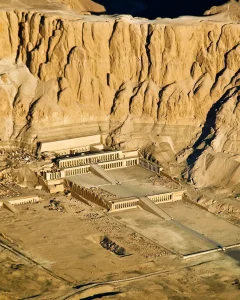
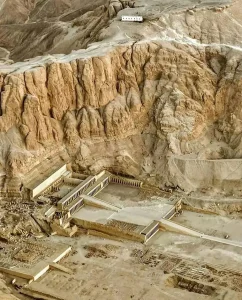
Temple of Edfu
Temple of Horus in Edfu, the second-largest temple in Egypt. This temple, built between 237 and 57 BC, is dedicated to the falcon-headed God Horus and is also known as the Temple of Horus.
Located between the Egyptian cities of Luxor and Aswan. A French archaeologist by the name of Auguste Mariette uncovered it from its sand burial in the 1860s. It’s one of the most beautiful and well-preserved of all Egyptian temples.
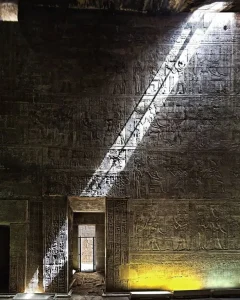
Temple of Philae
Located on a peaceful island and dedicated to the goddess of love, the Temple of Isis was almost lost in floods when the Aswan Dam was built in the 1960s. Thankfully it was rescued, and it is now one of Egypt’s most beautiful and best-preserved ancient sanctuaries.
